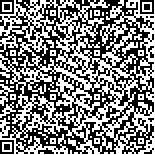| 摘要: |
| [摘要] 目的 探讨应激性高血糖对脑出血开颅血肿清除术预后的影响。方法 收集百色市人民医院神经外科2018-01~2019-12收治的131例无糖尿病史的脑出血患者的临床资料,均行开颅血肿清除术,根据脑出血后是否发生应激性高血糖分为应激性高血糖组(血糖≥6.9 mmol/L,糖化血红蛋白正常,62例)和非应激性高血糖组(血糖<6.9 mmol/L,糖化血红蛋白正常,69例),比较两组临床资料的差异。结果 应激性高血糖组入院空腹血糖显著高于非应激性高血糖组(P<0.05)。两组在年龄、性别、体质量指数、入院糖化血红蛋白、血肿量、凝血酶原时间、纤维蛋白原、血小板计数和发病至手术间隔时间方面比较差异无统计学意义(P>0.05)。应激性高血糖组术后发生再出血、颅内感染和术后30 d发生死亡的人数比例显著高于非应激性高血糖组(P<0.05),术后入住ICU时间占总住院时间的比值显著大于非应激性高血糖组(P<0.05),术后3个月格拉斯哥预后评分量表(GOS)评分显著低于非应激性高血糖组(P<0.05)。结论 应激性高血糖可促进脑出血开颅血肿清除术后不良事件的发生,应受到临床重视。 |
| 关键词: 应激性高血糖 脑出血 开颅血肿清除术 预后 |
| DOI:10.3969/j.issn.1674-3806.2021.05.19 |
| 分类号:R 741.02 |
| 基金项目:百色市科学研究与技术开发计划项目(编号:百科20184706) |
|
| Influence of stress hyperglycemia on prognosis of cerebral hemorrhage after craniotomy for hematoma removal |
|
ZHANG Kun-yuan, LIAO Chang-pin, LI Ting-yang
|
|
Graduate School of Youjiang Medical University for Nationalities, Guangxi 533000, China
|
| Abstract: |
| [Abstract] Objective To explore the influence of stress hyperglycemia on prognosis of cerebral hemorrhage after craniotomy for hematoma removal. Methods The clinical data of 131 cerebral hemorrhage patients without a history of diabetes who were admitted to the Department of Neurosurgery, People′s Hospital of Baise from January 2018 to December 2019 were collected. All the patients were performed craniotomy for hematoma removal. According to whether stress hyperglycemia occurred after cerebral hemorrhage, the patients were divided into stress hyperglycemia group(blood glucose ≥6.9 mmol/L, normal glycosylated hemoglobin, 62 cases) and non-stress hyperglycemia group(blood glucose <6.9 mmol/L, normal glycosylated hemoglobin, 69 cases). The differences in the clinical data were compared between the two groups. Results The level of fasting blood glucose in the stress hyperglycemia group at admission was significantly higher than that in the non-stress hyperglycemia group(P<0.05). There were no significant differences between the two groups in terms of age, gender, Body Mass Index(BMI), glycosylated hemoglobin at admission, hematoma volume, prothrombin time, fibrinogen, platelet count and the time between the onset and the operation(P>0.05). The proportion of the patients with postoperative rebleeding, intracranial infection and death 30 days after operation in the stress hyperglycemia group was significantly higher than that in the non-stress hyperglycemia group(P<0.05), and the ratio of postoperative stay in Intensive Care Unit(ICU) to total hospitalization time in the stress hyperglycemia group was significantly higher than that in the non-stress hyperglycemia group(P<0.05). The Glasgow Outcome Scale(GOS) scores 3 months after operation in the stress hyperglycemia group were significantly lower than those in the non-stress hyperglycemia group(P<0.05). Conclusion Stress hyperglycemia can promote the occurrence of adverse events after craniotomy for hematoma removal, which should be paid attention to clinically. |
| Key words: Stress hyperglycemia Cerebral hemorrhage Craniotomy for hematoma removal Prognosis |

